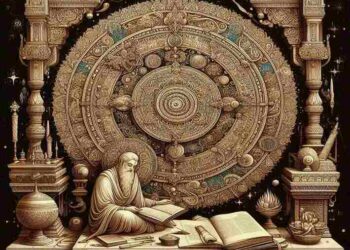Table of Contents
ToggleIntroduction
Latin American Boom Writers Influence On Literature A movement known as the Boom (or El Boom in Spanish) brought about a significant change in Latin American literature in the middle of the 20th century. The phrase “Boom” describes the swift and widespread increase in the international renown of Latin American writers of the era, especially in the 1960s and 1970s.
Regional authors started to receive recognition on a global scale for their avant-garde writing styles, daring narrative devices, and ways of questioning conventional storytelling conventions. By capturing the intricacies of Latin American history, politics, and identity, their writings changed not just Latin American literature but also literary tendencies throughout the world.
Many people believe that the Boom’s authors are the key figures in 20th-century Latin American literature. These writers, who included Carlos Fuentes, Mario Vargas Llosa, Julio Cortázar, and Gabriel García Márquez, elevated Latin American literature in the eyes of the world’s literary elite.
Their works pushed the limits of language and narrative structure while delving deeply into issues like identity, political unrest, social injustice, and existential concerns. Many of these authors incorporated aspects of modernism, existentialism, and magical realism, resulting in a fresh and unique literary legacy that found resonance all across the world.
This article examines the significant literary contributions made by Latin American Boom writers, emphasizing how their writings impacted international literary movements, molded Latin America’s political and cultural landscape, and continue to motivate upcoming generations of authors and readers. We will discover how the Boom writers’ contributions went beyond Latin America’s borders and enhanced the world literary canon by looking at how they reinterpreted literary conventions.
1. Gabriel García Márquez: The Master of Magical Realism
Perhaps the most iconic figure of the Latin American Boom is Gabriel García Márquez, whose Cien años de soledad (One Hundred Years of Solitude) is one of the most significant and influential works of the 20th century. Márquez’s writing blends the real with the fantastical, creating a unique narrative style that became known as magical realism. This genre, which blends magical elements with realistic descriptions of everyday life, allowed Márquez to explore the complexities of Latin American culture, history, and politics in ways that were both imaginative and profound.
Read more
One Hundred Years of Solitude is a sprawling multi-generational story of the Buendía family, set in the fictional town of Macondo. Through the family’s rise and fall, Márquez explores themes such as solitude, the cyclical nature of history, and the intersection of myth and reality. The novel’s intricate structure, poetic language, and rich symbolism helped redefine the possibilities of narrative fiction and became a touchstone for both Latin American and world literature.
Márquez’s influence extends far beyond his own works. His embrace of magical realism and his depiction of Latin American society as one where reality is often interwoven with myth inspired countless authors around the world. Authors such as Salman Rushdie, Isabel Allende, and Toni Morrison were influenced by García Márquez’s approach to narrative and his ability to blend the supernatural with the everyday.
2. Julio Cortázar: The Absurd and the Surreal
Another key figure in the Latin American Boom is Julio Cortázar, an Argentine writer whose works are known for their experimental structures and surrealist elements. Cortázar’s writing often defies traditional narrative forms, instead embracing the fragmented and the absurd. His work challenges readers to reconsider the nature of reality and the possibilities of fiction.
Latin American Boom Writers Influence On Literature Cortázar’s Final del juego (End of the Game) and Rayuela (Hopscotch) are some of his most famous works. Rayuela, a novel that allows the reader to choose how to navigate the chapters, is a radical departure from traditional narrative forms.
It combines elements of the absurd and the existential, examining the struggles of its protagonist, Horacio Oliveira, as he grapples with his own identity, relationships, and the chaos of life in Buenos Aires. The novel’s non-linear structure and fragmented storytelling challenge conventional ideas of narrative, offering a new, dynamic way for readers to experience a novel.
Cortázar’s influence on the Boom writers and beyond is immense. His experimental approach to storytelling opened the doors for other authors to experiment with narrative structure and form, influencing later writers such as Italo Calvino, Thomas Pynchon, and Haruki Murakami. His ability to fuse the everyday with the fantastical, and his exploration of the human condition through surrealist lenses, made him one of the defining figures of Latin American literature.
3. Mario Vargas Llosa: Political Engagement and Social Commentary
Latin American Boom Writers Influence On Literature Mario Vargas Llosa, a Peruvian writer, is another towering figure of the Latin American Boom. Unlike García Márquez and Cortázar, Vargas Llosa’s work is often more explicitly political, with a focus on issues such as dictatorship, corruption, and the social dynamics of Latin American society.
His novel La ciudad y los perros (The Time of the Hero), published in 1963, is a searing critique of the authoritarianism and corruption found in the Peruvian military, reflecting broader concerns about power structures in Latin America.
Vargas Llosa’s works explore themes of power, revolution, and individual agency within the context of authoritarian regimes. His Conversation in the Cathedral (1969) delves deeply into the consequences of living under dictatorship, while The Feast of the Goat (2000) explores the final days of the Dominican Republic’s Trujillo dictatorship, focusing on the psychological and political impact of a totalitarian regime.
Vargas Llosa’s works have had a profound impact on Latin American literature, especially in their use of literature as a tool for political and social critique. His exploration of authoritarianism and the abuse of power resonated with readers across the globe, making him a key figure in not only Latin American literature but also in the broader political and cultural conversation.
4. Carlos Fuentes: The Power of History and Identity
Latin American Boom Writers Influence On Literature Carlos Fuentes, a Mexican author, is often associated with the Boom for his exploration of Latin American identity, history, and the complex relationships between individual lives and national histories.
Fuentes’ works are known for their deep historical and cultural analysis, particularly in how they relate to Mexico’s past and the broader Latin American context. His novel La muerte de Artemio Cruz (The Death of Artemio Cruz) is a powerful example of this, focusing on the life of a corrupt, dying man who reflects on his role in shaping modern Mexico.
Fuentes’ writing often blends the personal with the historical, and his works engage with the tensions between modernity and tradition in Latin America. His works, such as Terra Nostra (1975), employ a rich tapestry of language and narrative techniques to explore the relationship between Mexico’s past, present, and future. Fuentes’ influence on Latin American writers is profound, especially in how he used the novel to explore national identity and the intersection of personal history with larger political and historical forces.
5. The Legacy of the Latin American Boom Writers
Latin American Boom Writers Influence On Literature The Latin American Boom writers not only transformed the literary world but also left a lasting imprint on the cultural and political landscapes of Latin America and beyond. Their works captured the nuances of Latin American identity, examining the interplay between history, politics, and personal experience.
They brought attention to the struggles of marginalized communities, the consequences of colonialism and authoritarianism, and the tension between tradition and modernity. These writers elevated Latin American literature on the global stage, earning recognition and respect from readers, critics, and fellow writers around the world.
Read more
The Boom writers also contributed significantly to the development of literary genres such as magical realism, the political novel, and the existential novel. Their innovative use of language, narrative structure, and thematic complexity redefined the possibilities of fiction. The global literary community was deeply influenced by their work, with writers from various parts of the world incorporating elements of the Boom writers’ styles and themes into their own writings.
Latin American Boom Writers Influence On Literature Today, the legacy of the Boom continues to influence contemporary Latin American writers such as Roberto Bolaño, Juan Gabriel Vásquez, and Valeria Luiselli. The Boom writers opened the door for a new generation of authors to experiment with form, content, and genre, creating a vibrant literary tradition that continues to evolve and thrive.

Conclusion
Latin American Boom Writers Influence On Literature The writers of the Latin American Boom made a lasting impression on the world of literature. Because of their literary inventiveness, their handling of difficult social and political subjects, and their capacity to convey the rich cultural and historical reality of Latin America, their works are still read, researched, and appreciated today.
These authors reshaped the potential of literature in addition to defining a period of Latin American literature. Through their writings, they have influenced authors and readers worldwide, changing the literary landscape in ways that go much beyond their local cultural contexts.
By emphasizing the intricacies of politics, history, and identity via intricately layered storylines and inventive storytelling, the Boom writers’ influence can be seen in the way they elevated Latin American literature to a global prominence.
Latin American Boom Writers Influence On Literature It is evident that the Boom was more than a single event; rather, it was a movement that influenced the literary imagination for many generations to come, as evidenced by the way their influence can still be felt in modern literature.
Read more
FAQ
1. What was the Latin American Boom?
The Latin American Boom was a literary movement that occurred in the 1960s and 1970s, during which a group of Latin American authors gained widespread international recognition for their innovative writing styles, thematic complexity, and political engagement. The Boom writers—such as Gabriel García Márquez, Julio Cortázar, Mario Vargas Llosa, and Carlos Fuentes—redefined the possibilities of narrative form and explored the social, political, and cultural realities of Latin America.
2. What are some of the key themes explored by Boom writers?
Boom writers explored a range of themes, including political instability, social injustice, the complexities of Latin American identity, and the effects of colonialism. They also delved into existential questions, the cyclical nature of history, and the intersection of the personal with the political. Many of their works challenged traditional narrative structures and incorporated elements of magical realism, surrealism, and modernism.
3. How did the Latin American Boom impact global literature?
The Latin American Boom had a profound impact on global literature by introducing new narrative forms, literary techniques, and thematic concerns that resonated with readers worldwide. The Boom writers expanded the possibilities of storytelling, influencing writers from other regions and inspiring the development of global literary movements such as postmodernism and magical realism.
4. Are the works of the Boom writers still relevant today?
Yes, the works of the Boom writers remain highly relevant today. Their exploration of political and social issues, their innovation in narrative techniques, and their reflections on identity, memory, and history continue to resonate with contemporary readers. Their influence can be seen in the works of modern writers who continue to experiment with form and content in similar ways.
5. Where can I start reading the works of the Latin American Boom writers?
A good starting point would be to begin with the most iconic works of the Boom writers, such as One Hundred Years of Solitude by Gabriel García Márquez, Hopscotch by Julio Cortázar, The Time of the Hero by Mario Vargas Llosa, and The Death of Artemio Cruz by Carlos Fuentes. These novels capture the essence of the Boom and provide an introduction to the themes, styles, and innovations that define this literary movement.
Read more
















